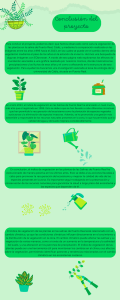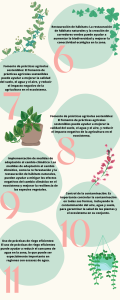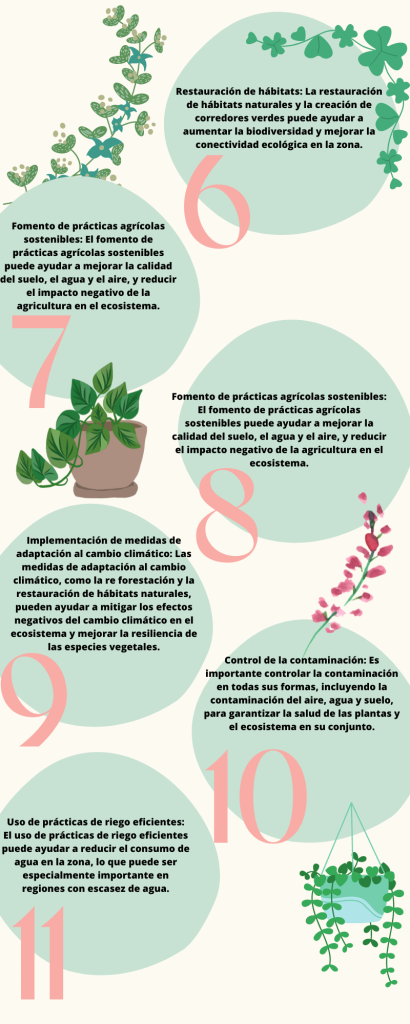Climate Detectives Projects 2022-2023
Project title: THE NATIVE PLANTS OF THE SALT MARSHES OF CADIZ AFFECTED BY CLIMATE CHANGE
Team: IES SAN SEVERIANO 4º ESO SALINAS
Avenida San Severiano Cádiz Spain 4 Student’s age: 14-15 years old, 16-17 years old
Climate change affects plants in salt marshes?
¿Afecta el cambio climático a las plantas de las salinas?

Research on the vegetation of salt marsh plants is a topic of great interest due to the extreme conditions in which these plants can survive. These conditions include high salt concentration and extreme temperatures, making it an inhospitable place for most plants.
One of the main aspects of research on these plants is to understand the adaptive mechanisms that allow them to survive in this extreme environment. Halophytes are plants that can tolerate high salt concentrations thanks to different mechanisms, such as the accumulation of salt in their leaves or the excretion of salt through their roots. Glycophytes, on the other hand, are plants that cannot tolerate high salt concentrations and have developed mechanisms to maintain osmotic balance.
Variations in the composition of salt marsh plant communities are important for understanding how they are structured and maintained in this extreme environment. Research has shown that variability in the amount of rainfall and temperature influences the composition and distribution of salt marsh plants.
For example, the distribution of certain salt marsh plant species has been found to be related to the amount of rainfall in a given year. In addition, temperature extremes also affect distribution.
In summary, research on salt marsh plants has shown that the adaptation of these plants to extreme conditions is complex and diverse. Understanding the mechanisms of adaptation, the variability in the composition of salt marsh plant communities and their relationship to rainfall and temperature are important areas of research to better understand the biodiversity of this extreme environment and its potential use in the pharmaceutical and cosmetic industry.
La investigación de la vegetación de las plantas de las salinas es un tema de gran interés debido a las condiciones extremas en las que estas plantas pueden sobrevivir. Estas condiciones incluyen alta concentración de sal y temperaturas extremas, lo que las convierte en un lugar inhóspito para la mayoría de las plantas.
Uno de los principales aspectos de la investigación de estas plantas es comprender los mecanismos de adaptación que les permiten sobrevivir en este ambiente extremo. Los halófitos son plantas que pueden tolerar altas concentraciones de sal gracias a diferentes mecanismos, como la acumulación de sal en sus hojas o la excreción de sal a través de las raíces. Los glicófitos, por otro lado, son plantas que no pueden tolerar altas concentraciones de sal y han desarrollado mecanismos para mantener el equilibrio osmótico.
Las variaciones en la composición de las comunidades de plantas de las salinas son importantes para comprender cómo se estructuran y mantienen en este ambiente extremo. La investigación ha demostrado que la variabilidad en la cantidad de precipitaciones y temperaturas influye en la composición y distribución de las plantas en las salinas.
Por ejemplo, se ha encontrado que la distribución de ciertas especies de plantas de las salinas está relacionada con la cantidad de precipitaciones en un año determinado. Además, las temperaturas extremas también afectan la distribución.
En resumen, la investigación de las plantas de las salinas ha demostrado que la adaptación de estas plantas a condiciones extremas es compleja y diversa. La comprensión de los mecanismos de adaptación, la variabilidad en la composición de las comunidades de plantas de las salinas y su relación con la cantidad de precipitaciones y temperaturas son áreas importantes de investigación para entender mejor la biodiversidad de este ambiente extremo y su potencial uso en la industria farmacéutica y cosmética.

We have observed how the plant vegetation varies in the Puerto Real salt marsh, Cadiz, with images from 1995-2023, in which we identify changes in the vegetation as the years go by in winter. Using the EO BROWSER website we explored the effects of flooding associated with a graph showing the rainfall and precipitation of those years and how it has affected the structure of this vegetation. To help us we looked for a research associated with the area of ecology of the University of Cadiz, located in Puerto Real.
In the year 2023, the vegetation index in the Salinas de Puerto Real has reached a much higher level than that recorded in 1995. This is due to the fact that different initiatives have been carried out, which have allowed the ecosystem to recover, such as the planting of autochthonous plant species and the elimination of invasive species. In addition, a more sustainable and responsible management of the natural resources present in the area has been promoted, which has allowed the quality of the water and soil to improve considerably.
In conclusion, the vegetation index in the plants of the Salinas de Puerto Real has evolved positively in recent years. This is due to the actions carried out to promote the recovery of the ecosystem and improve the quality of life of the species present in the area.
The vegetation index of plants in the salt marshes of Puerto Real is related to climate change, as climatic conditions directly influence the growth and distribution of vegetation in the area. Climate change can affect the salt pans and their vegetation in several ways, such as through an increase in temperature and soil salinity, and an alteration in precipitation patterns.
Hemos observado como varÍa la vegetación de las plantas en la salina de Puerto Real, Cádiz, con imágenes entre los años 1995-2023, en las cuales se identifica cambio dentro de la vegetación mediante el paso de los años en invierno. Mediante la web EO BROWSER exploramos los efectos de inundación asociados a una gráfica donde mostramos las precipitaciones y las lluvias de esos años y el como ha afectado en la estructura de esta vegetación. Para ayudarnos buscamos una investigación asociada al área de ecología de la universidad de Cádiz, situada en Puerto Real.
En el año 2023, el índice de vegetación en las Salinas de Puerto Real ha alcanzado un nivel mucho más alto que el registrado en 1995. Esto se debe a que se han llevado a cabo diferentes iniciativas, que han permitido la recuperación del ecosistema como la plantación de especies vegetales autóctonas y la eliminación de especies invasoras. Además, se ha promovido una gestión más sostenible y responsable de los recursos naturales presentes en la zona, lo que ha permitido que la calidad del agua y del suelo mejorara considerablemente.
En conclusión, el índice de vegetación en las plantas de las Salinas de Puerto Real ha evolucionado de manera positiva en los últimos años. Esto se debe a las acciones llevadas a cabo para promover la recuperación del ecosistema y mejorar la calidad de vida de las especies presentes en la zona.
El índice de vegetación de las plantas en las salinas de Puerto Real está relacionado con el cambio climático, ya que las condiciones climáticas influyen directamente en el crecimiento y la distribución de la vegetación en la zona. El cambio climático puede afectar las salinas y su vegetación de varias maneras, como a través de un aumento en la temperatura y la salinidad del suelo, y una alteración en los patrones de precipitación.

There are several proposals to improve the plants of the Salinas de Puerto Real, which can help to ensure the health and well-being of the ecosystem. Some of these proposals are:
-Promote the planting of indigenous plant species: This can help to improve the biodiversity of the area and ensure that the plant species planted here are suitable for the climate and conditions of the area.
-Removing invasive species: Removing invasive species that compete with native plants for resources can allow native plants to grow stronger and healthier.
-Implement sustainable management practices: It is important to manage natural resources in a sustainable and responsible manner, ensuring that the practices used do not negatively affect the ecosystem and the species that depend on it.
-Regular monitoring of the vegetation index: Regular monitoring of the vegetation index allows for the identification of potential problems or imbalances in the ecosystem, which enables preventive and corrective measures to be taken to maintain the health of the ecosystem.
-Habitat restoration: Restoring natural habitats and creating green corridors can help increase biodiversity and improve ecological connectivity in the area.
Environmental education and awareness-raising: Environmental education and awareness-raising can help to sensitise the local population to the importance of protecting and conserving the area’s natural resources.
-Pollution control: It is important to control pollution in all its forms, including air, water and soil pollution, to ensure the health of plants and the ecosystem as a whole.
In summary, there are various proposals for improvement that can be applied to the plants in the Salinas de Puerto Real to improve the health of the ecosystem and guarantee the survival of the plant species that live there.
Existen varias propuestas de mejora para las plantas de las Salinas de Puerto Real, que pueden ayudar a garantizar la salud y el bienestar del ecosistema. Algunas de estas propuestas son:
-Promover la plantación de especies vegetales autóctonas: Esto puede ayudar a mejorar la biodiversidad de la zona y asegurar que las especies vegetales que se planten aquí sean adecuadas para el clima y las condiciones de la zona.
-Eliminar especies invasoras: La eliminación de especies invasoras que compiten con las plantas autóctonas por los recursos puede permitir que estas últimas crezcan con mayor fuerza y salud.
-Implementar prácticas de gestión sostenible: Es importante gestionar los recursos naturales de manera sostenible y responsable, asegurándose de que las prácticas utilizadas no afecten negativamente al ecosistema y a las especies que dependen de él.
-Monitorizar regularmente el índice de vegetación: La monitorización regular del índice de vegetación permite identificar posibles problemas o desequilibrios en el ecosistema, lo que permite tomar medidas preventivas y correctivas para mantener la salud del ecosistema.
-Restauración de hábitats: La restauración de hábitats naturales y la creación de corredores verdes puede ayudar a aumentar la biodiversidad y mejorar la conectividad ecológica en la zona.
-Educación y concienciación ambiental: La educación y concienciación ambiental pueden ayudar a sensibilizar a la población local sobre la importancia de proteger y conservar los recursos naturales de la zona.
-Control de la contaminación: Es importante controlar la contaminación en todas sus formas, incluyendo la contaminación del aire, agua y suelo, para garantizar la salud de las plantas y el ecosistema en su conjunto.
En resumen, existen diversas propuestas de mejora que pueden aplicarse en las plantas de las Salinas de Puerto Real para mejorar la salud del ecosistema y garantizar la supervivencia de las especies vegetales que habitan en él.
https://sites.google.com/view/vegetacionplantasls/%C3%ADndice?authuser=1
This project was automatically translated into English.
Projects are created by the teams and they take the full responsibility of the shared data.
← All projects





